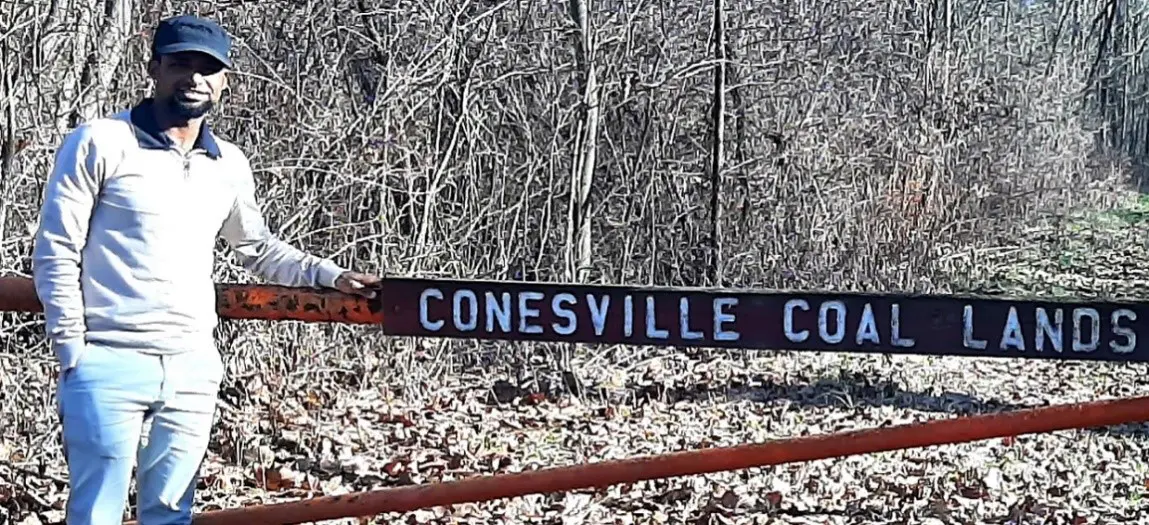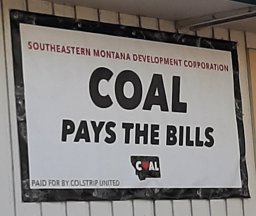
Fresh from receiving the inaugural CRC-TiME Award for Outstanding Student at the CRC-TiME Annual Forum in Latrobe Valley, Victoria, I travelled to the US in late November and December 2023. The purpose of my travel was to conduct field research for the second component of my research on coal mining and challenges and opportunities for diversifying regional economies. This time, my field research focused on the States of Montana and Pennsylvania. While coal mining in Southeastern Montana has increased over the years to supply electricity generating plants in Montana and the Midwest, anthracite coal in Eastern Pennsylvania has declined. These opposing trends somehow seem to be reflected in the level of energy diversification in both areas, with the latter’s more industrial development, particularly the steel industry, relying less on coal and more on natural gas and some renewable energy. In addition to the extractive resource utilisation for energy, my research enquired about the broader utilisation of resources and their derivatives in other economic sectors.
 Meeting and engaging multi-stakeholders is the best way to get a deeper insight on important issues such as coal mining in the context of energy transition and economic diversification. In Montana, I toured Westmoreland’s Rosebud Mine in Colstrip and Colstrip Energy Limited Partnership Plant (Rosebud Power Plant), thanks to the staff of the respective companies. I also visited Colstrip Steam Electric Station (from outside), communities,
Meeting and engaging multi-stakeholders is the best way to get a deeper insight on important issues such as coal mining in the context of energy transition and economic diversification. In Montana, I toured Westmoreland’s Rosebud Mine in Colstrip and Colstrip Energy Limited Partnership Plant (Rosebud Power Plant), thanks to the staff of the respective companies. I also visited Colstrip Steam Electric Station (from outside), communities,
 businesses, and Southeastern Montana Development Corporation (SEMDC) in Colstrip thanks to SEMDC’s Executive Director Jim Atchinson, who kindly hosted me and helped me immerse in the community structures and exchange with key stakeholders.On the way to Colstrip, I had a chance to visit a coal museum in Roundup, thanks to Norma Trent of Montana Travel Association.
businesses, and Southeastern Montana Development Corporation (SEMDC) in Colstrip thanks to SEMDC’s Executive Director Jim Atchinson, who kindly hosted me and helped me immerse in the community structures and exchange with key stakeholders.On the way to Colstrip, I had a chance to visit a coal museum in Roundup, thanks to Norma Trent of Montana Travel Association.
In Pennsylvania, Dan Koury from the PA Department of Environmental Protection’s District Mining Office drove me around the abandoned Bear Valley Strip Mine in Northumberland County and I witnessed the stagnation in recovery of former coal town (Shamokin), as well as the bareland of ghost-town Centralia, all in proximate neighbourhood as if to offer visible evidence of the diverse fortunes that might lie post coal mining.
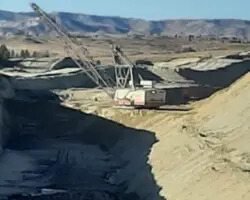 |
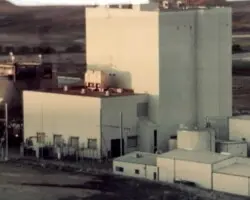 |
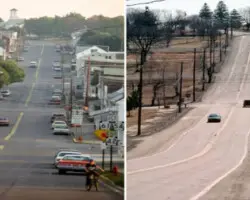 [1] |
These visits and engagement with key stakeholders including local county leaders have given me an understanding of the extent and perspectives on coal dependency and economic diversification opportunities and challenges. The drive for economic diversification is made more urgent by the challenges of market and environmental regulations facing the 15 coal counties in Southeastern Montana. The lived experience of coal communities such as in Colstrip which was built on coal mining and power generation dawns a realisation that any prospect of transition away from coal is incumbent upon strategising and investing on economic diversification centred around people’s interests, contextual strengths and innovative capabilities. Efforts to take on such an important work have been led by SEMDC.
A different tale is demonstrated in the anthracite region of Pennsylvania where programs to attract new industries have shown some diversification progress over the last century[2]. The coal industry in the region is almost non-existent with the remaining activities involving the re-mining and re-processing of waste piles from past coal mining. Dan Koury and 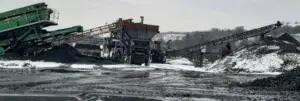 Michael Haney (A Geologist at Pennsylvania Department of Environmental Protection who I met through A. Prof David Sanchez from the Department of Civil and Environmental Engineering, University of Pittsburgh), helped me grasp the enormous environmental challenge, touring around the mountains of waste coal and the resulting acid mine drainage which releases heavy metals such as iron, lead, mercury, and aluminium causing the orange colouring of streams. Four coal-fired plants remain in operation, feeding off the waste coal known as ‘culm’ and generating a total output of 238.5 megawatts used in electric power generation. In addition to economic return, the re-mining of waste coal in Northamberland County is credited for land reclamation, enough reason for the locals to favour more coal mining activity.
Michael Haney (A Geologist at Pennsylvania Department of Environmental Protection who I met through A. Prof David Sanchez from the Department of Civil and Environmental Engineering, University of Pittsburgh), helped me grasp the enormous environmental challenge, touring around the mountains of waste coal and the resulting acid mine drainage which releases heavy metals such as iron, lead, mercury, and aluminium causing the orange colouring of streams. Four coal-fired plants remain in operation, feeding off the waste coal known as ‘culm’ and generating a total output of 238.5 megawatts used in electric power generation. In addition to economic return, the re-mining of waste coal in Northamberland County is credited for land reclamation, enough reason for the locals to favour more coal mining activity.
My travel in the US became even more worthwhile as I delivered a presentation over working lunch to staff and PhD students who are working on minerals, and a guest lecture to students of environmental science at the University of Delaware, upon invitation by Prof Saleem Ali, Chair of the Department of Geography & Spatial Sciences. Moreover, I delivered a presentation to staff and PhD students at the Ohio State University upon invitation by A. Prof Jeffrey Jacket from the School of Environment and Natural Resources. As with the first component of my research, I have used Q-methodology to collect data both online and in-person involving participants in Montana, Pennsylvania and British Columbia, Canada. The next step is to use the same method to analyse the data quantitatively to generate shared perspectives around the topic, and I hope to share the resulting research output sometime this year.
 |
 |
 |
Finally, I would like to thank Prof Kathleen Araújo (Director) and Cassie Koerner (Assistant Director) from the Energy Policy Institute, Boise State University, who helped with identifying participants in Montana and Pennsylvania and will partner in the write-up of research output.
Fitsum S. Weldegiorgis, PhD candidate and CRC TiME HDR top-up scholarship recipient
[1] Photo credit https://www.historydefined.net/centralia-pa/
[2] Aurand, H. W. (1970). Diversifying the Economy of the Anthracite Regions, 1880-1900. The Pennsylvania Magazine of History and Biography, 94(1), 54-6

